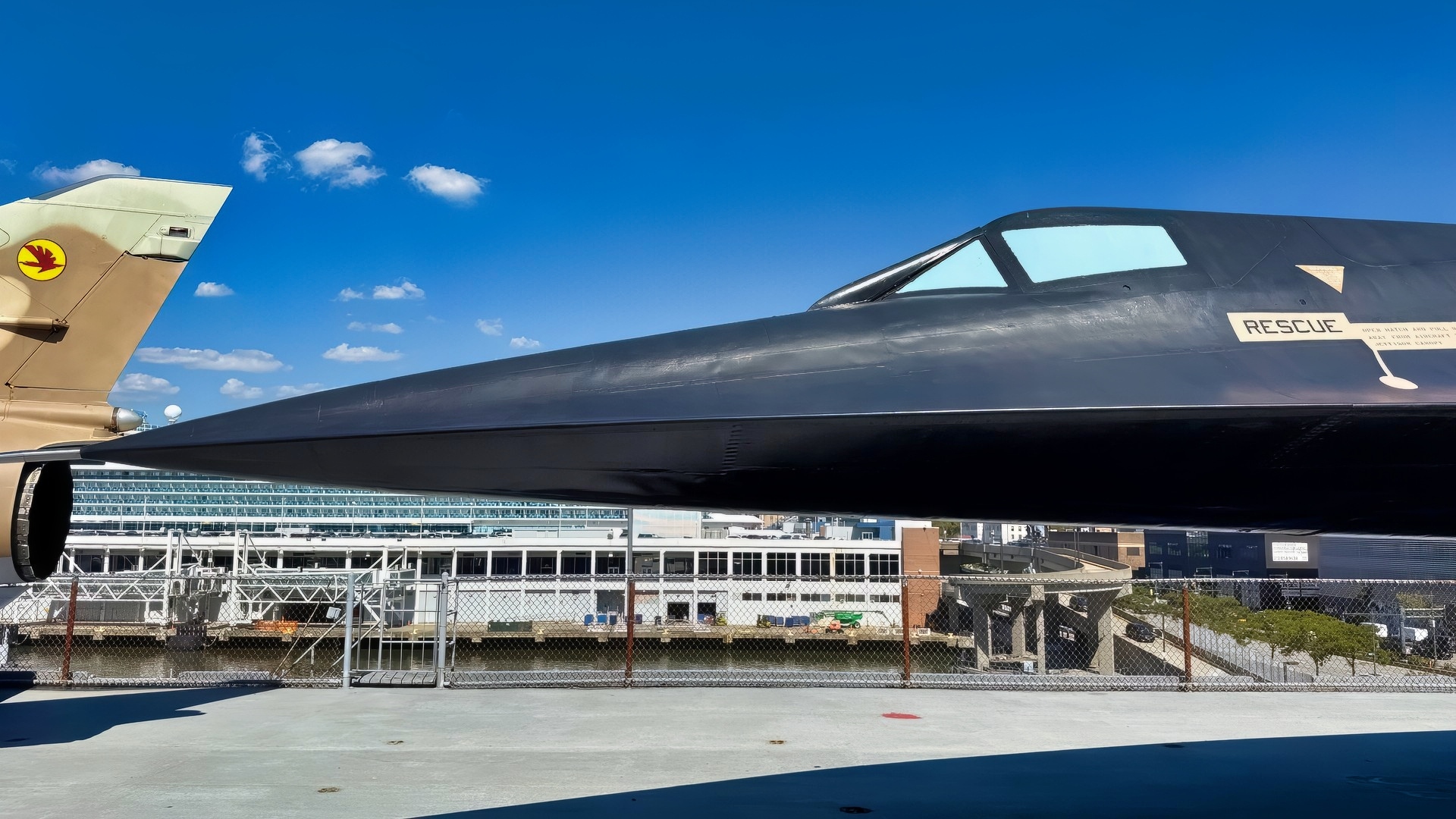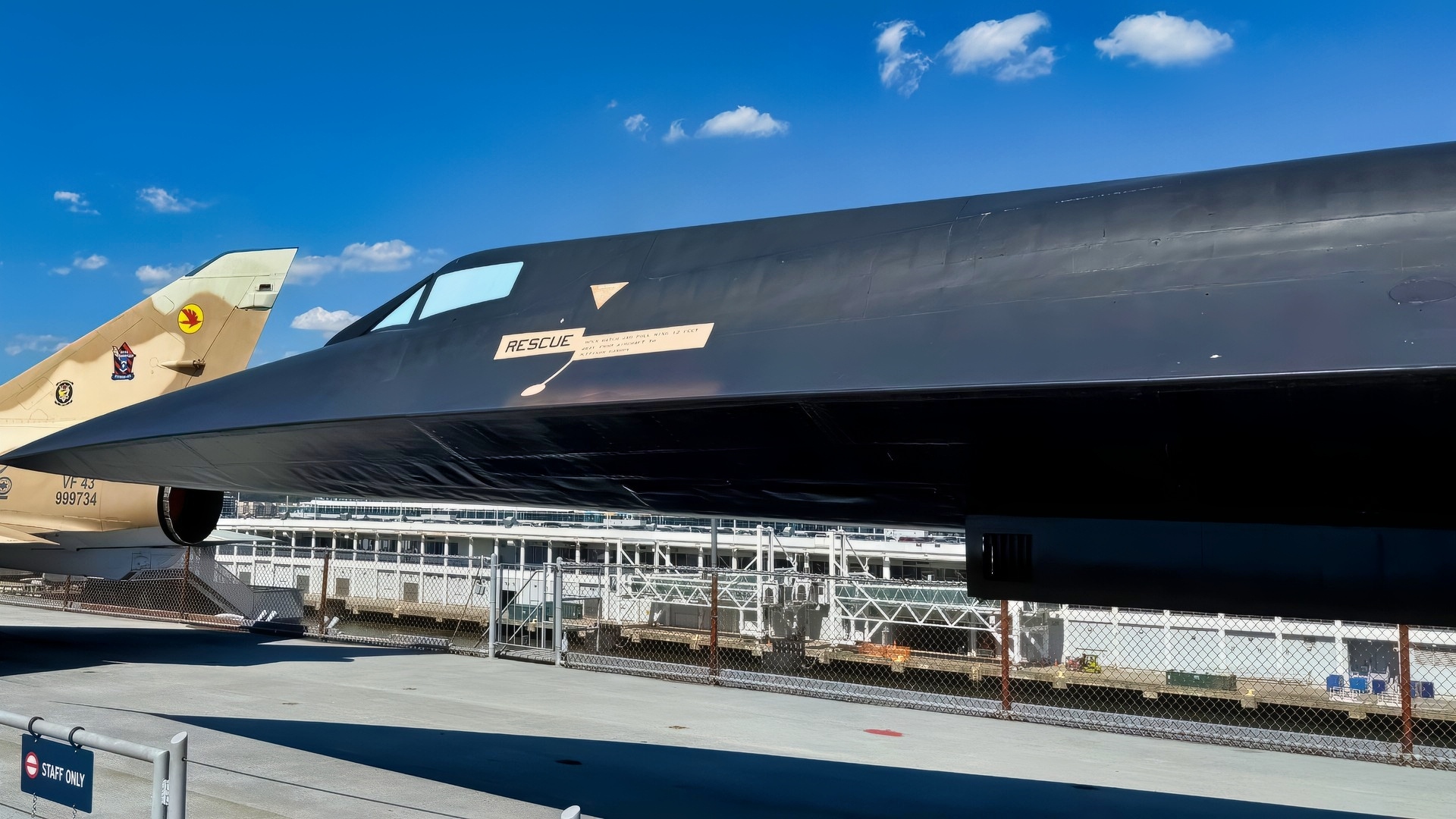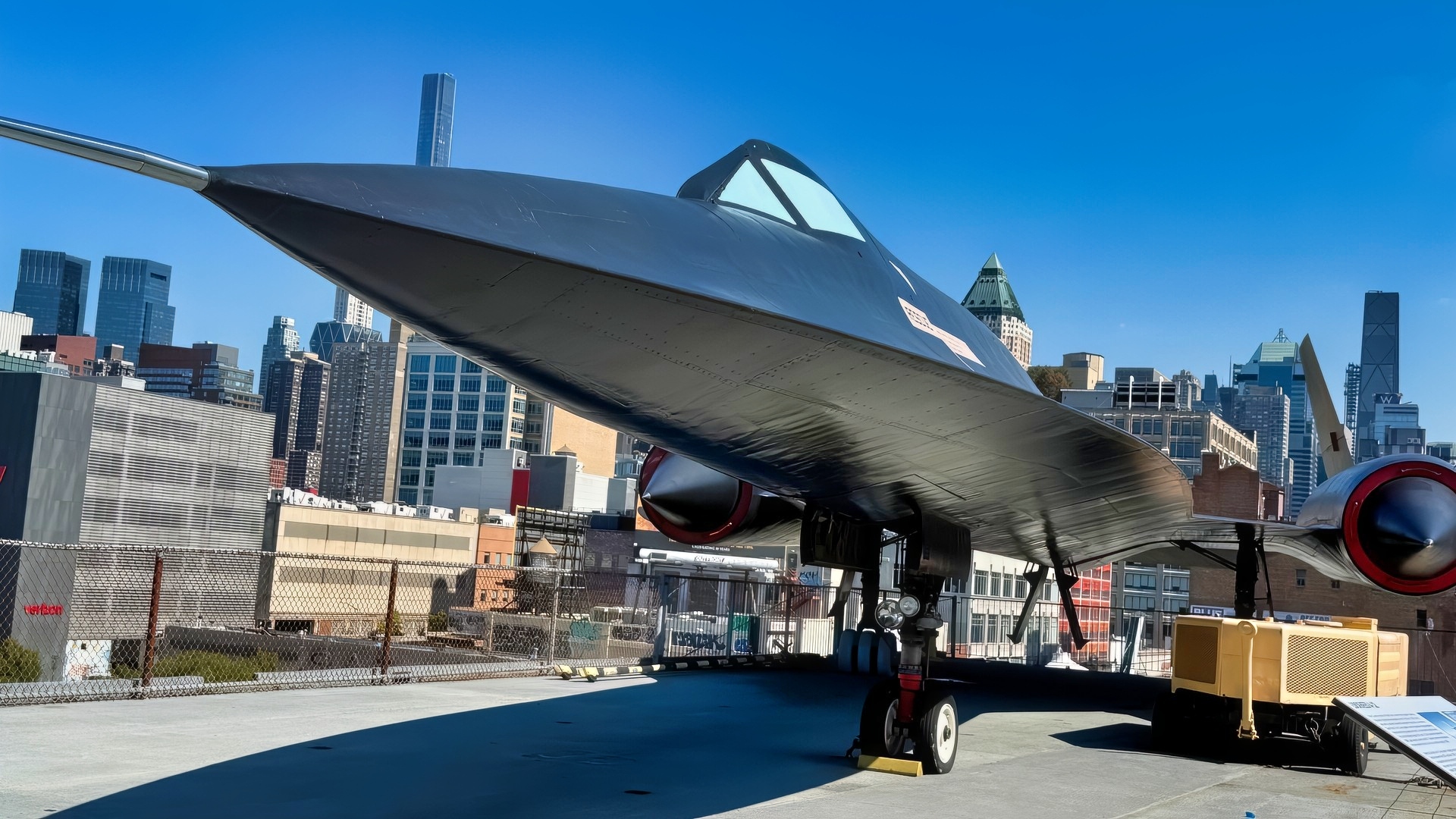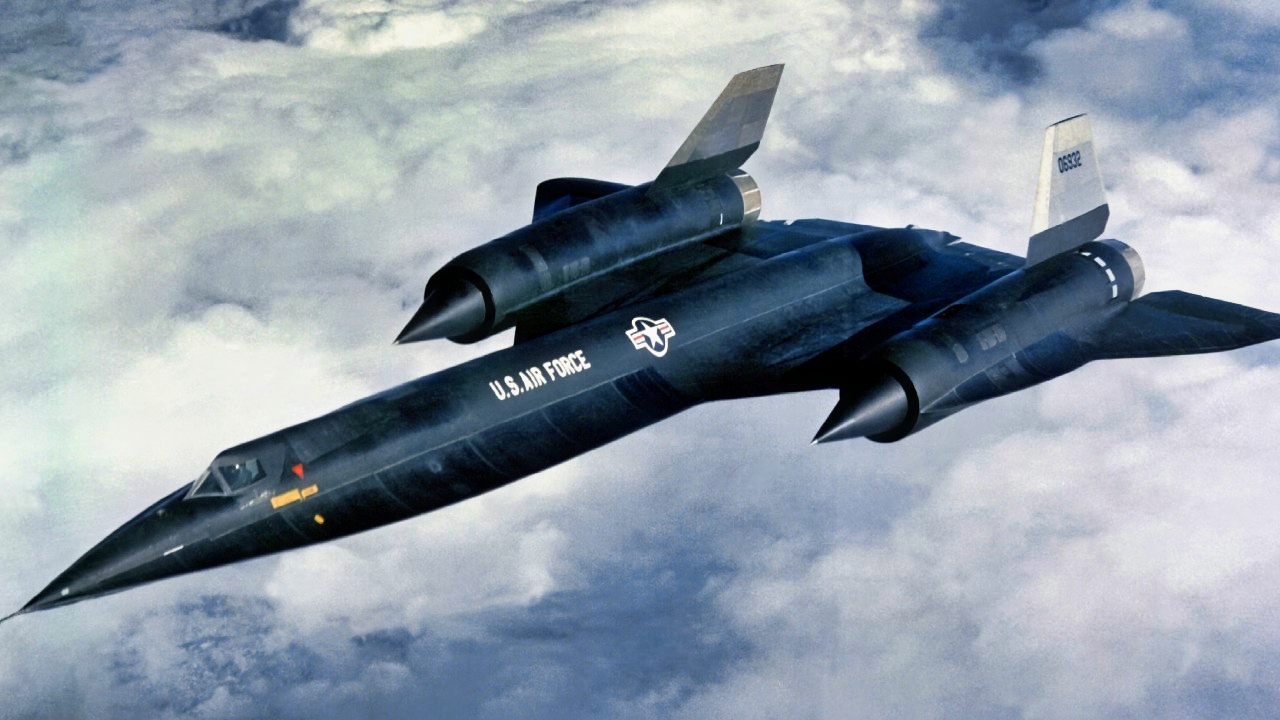Article Summary – Years before the SR-71 Blackbird made headlines, its CIA predecessor—the A-12 Oxcart—was already flying Mach 3 reconnaissance over North Vietnam.
-In October 1967, pilot Denny Sullivan’s A-12 became the closest any of these “black” aircraft came to being shot down when North Vietnamese SA-2 missiles detonated nearby, peppering the jet with shrapnel later found embedded in its composite leading edge.

YF-12A. A similar plane to the A-12 Oxcart and SR-71. Credit: NSJ.
-Operating from Kadena, the Oxcart’s Black Shield missions mapped Hanoi’s SAM network, confirmed the absence of surface-to-surface missiles, and eluded enemy radar—until those October launches.
-Within a year, the A-12 was retired and quietly replaced by the Air Force’s SR-71.
-BONUS – We have photos of the A-12 Oxcart from recent visits to museum-based platforms of the A-12 Oxcart across the country. We have pictures of that visit included in this article.
The Stealth Before the SR-71: A-12 Oxcart’s Near-Death Over Hanoi
The legendary SR-71 Blackbird famously was never shot down despite more than 4,000 missiles fired at it over the years. (A dozen of the aircraft were lost to accidents).
There were a couple of moments during the Vietnam War, however, when earlier version of the stealth spy plane suffered close calls after being hit by shrapnel. The most notable case involved the CIA’s A-12 Oxcart, which was hit by shrapnel in Vietnam in October 1967.
“No reconnaissance aircraft in history has operated in more hostile airspace or with such complete impunity than the SR-71 Blackbird,” The Aviation Geek Club wrote of the spyplane in 2023. “It is the fastest aircraft propelled by air-breathing engines. The Blackbird’s performance and operational achievements placed it at the pinnacle of aviation technology developments during the Cold War.”

A-12 CIA Spy Plane. Image Credit: National Security Journal.

Lockheed A-12 from USS Intrepid. National Security Journal Photo.

Lockheed A-12 National Security Journal Photo. Taken Onboard USS Intrepid on September 18, 2025.
Jim Goodall, former Master Sergeant in the U.S. Air Force and author of a book-length history of the plane called Lockheed SR-71 Blackbird: The Illustrated History of America’s Legendary Mach 3 Spy Plane, shared with Aviation Geek Club an account of the time the plane’s forerunners came closest to being shot down.
The A-12 was the CIA’s immediate predecessor to the Blackbird, while the SR-71 was operated by the Air Force. The A-12 had a cockpit for one pilot, as opposed to the SR-71’s two.
The Shrapnel Strike
According to Goodall, the incident took place on Oct. 30, 1967, when the spyplane was on its third pass in three days over the North Vietnamese capital of Hanoi. The crews objected to flying the same mission again, but they were overruled.
The pilot on the fateful flight was Denny Sullivan, who was one of only six A-12 mission pilots. Sullivan’s plane “ran into some debris from part of the fusing components of a Soviet-built SA-2 as he was leaving the area,” which was over North Vietnam.
The spy plane, of course, was not shot down. But “the damage was found on a post-flight inspection and the composite inboard leading edge had something wedged in it, and the CIA identified it as part of the fusing mechanism of the SA-2,” according to Aviation Geek Club.
“Black Shield”
In 1995, what’s now known as Air and Space Forces Magazine wrote about that day as part of a broader article on the Oxcart. The magazine cited the Winter 1970-71 issue of Studies in Intelligence, which it described as “a classified internal publication of the Central Intelligence Agency.” The report was declassified in the 1990s and consisted of a history of the A-12 Oxcart.

A-12 Oxcart National Security Journal Photo.
The report starts by sharing the story of the day in May 1967, about five months before the shrapnel incident, when “a long, thin, highly classified American aircraft taxied to the runway at Kadena AB, Okinawa, south of the Japanese main islands.” That plane, the A-12 Oxcart, would make its first appearance in Vietnam later the same day.
The spy plane had been developed by Lockheed Martin’s vaunted SkunkWorks. It was being used to counter the possibility of North Vietnam deploying surface-to-surface missiles—although thought had been given to using the spy plane over Cuba.
“The Oxcart was notable for its extremely long, slim shape, enormous jet engines, and sharp, projecting nose,” the Studies in Intelligence report said. “It was a revolutionary airplane, able to fly at Mach 3 for more than 3,000 miles without refueling. After it had burned off much of its fuel, it could cruise above 90,000 feet.”
Once the Oxcart started flying over Vietnam, the early results were impressive.
“Seventy of the 190 known surface-to-air missile (SAM) sites in North Vietnam were photographed, as were nine other priority targets,” according to Air and Space Forces. The CIA directed all of the plane’s missions.
“No radar signals were detected, indicating that the first mission had gone completely unnoticed by both the Chinese and North Vietnamese. By mid-July, the A-12 reconnaissance flights had determined with a high degree of confidence that there were no surface-to-surface missiles in North Vietnam.”
The Oxcart was nearly hit twice in October of 1967.
“During an A-12 flight in October, a North Vietnamese SAM site launched a single, unsuccessful missile—the first time a missile had been fired at the Oxcart,” the Air and Space report said. “Mission photography documented missile smoke above the SAM firing site, the missile itself, and its contrail. The A-12’s electronic countermeasures equipment appeared to perform well against the missile firing.”
Then came the flight when the damage was done.
Sullivan, the pilot, “detected radar tracking on his first pass over North Vietnam. Two sites prepared to launch missiles, but neither did. During the second pass, however, at least six missiles were fired at Sullivan’s aircraft, each confirmed on mission photos by missile vapor trails. Sullivan saw these vapor trails and witnessed three missile detonations.”
In 1968, the Oxcart continued its spy missions over North Vietnam, while also occasionally surveilling North Korea. A flight in May of that year turned out to be its last.
The End of the Oxcart
In 1968, the Oxcart was phased out, a process in the works even before the Vietnam missions began.
“In the months after it first performed its appointed role over North Vietnam on the last day of May 1967, the Oxcart demonstrated both its exceptional technical capabilities and the competence with which its operations were managed. As word began to get around that Oxcart was to be phased out, high-level officials began to feel uneasy,” Air and Space Forces wrote.
Even so, the Pentagon went ahead with the retirement.
“Early in March 1968, USAF SR-71 aircraft began to arrive at Kadena to take over the Black Shield commitment, and by gradual stages, the A-12 was placed on standby to back up the SR-71. After Oxcart’s last operational mission, the Kadena detachment was advised to prepare to go home,” the report said.
The Oxcart’s existence would remain a secret until after the Cold War was over.
About the Author: Stephen Silver
Stephen Silver is an award-winning journalist, essayist, and film critic, and contributor to the Philadelphia Inquirer, the Jewish Telegraphic Agency, Broad Street Review, and Splice Today. The co-founder of the Philadelphia Film Critics Circle, Stephen lives in suburban Philadelphia with his wife and two sons. For over a decade, Stephen has authored thousands of articles that focus on politics, national security, technology, and the economy. Follow him on X (formerly Twitter) at @StephenSilver, and subscribe to his Substack newsletter.
More Military
The U.S. Military Is In ‘Crisis’
Canada’s F-35 Stealth Fighter Mistake Is Just Around the Corner
The Mach 2.23 F-4G Wild Weasel Has a Message for the U.S. Air Force










